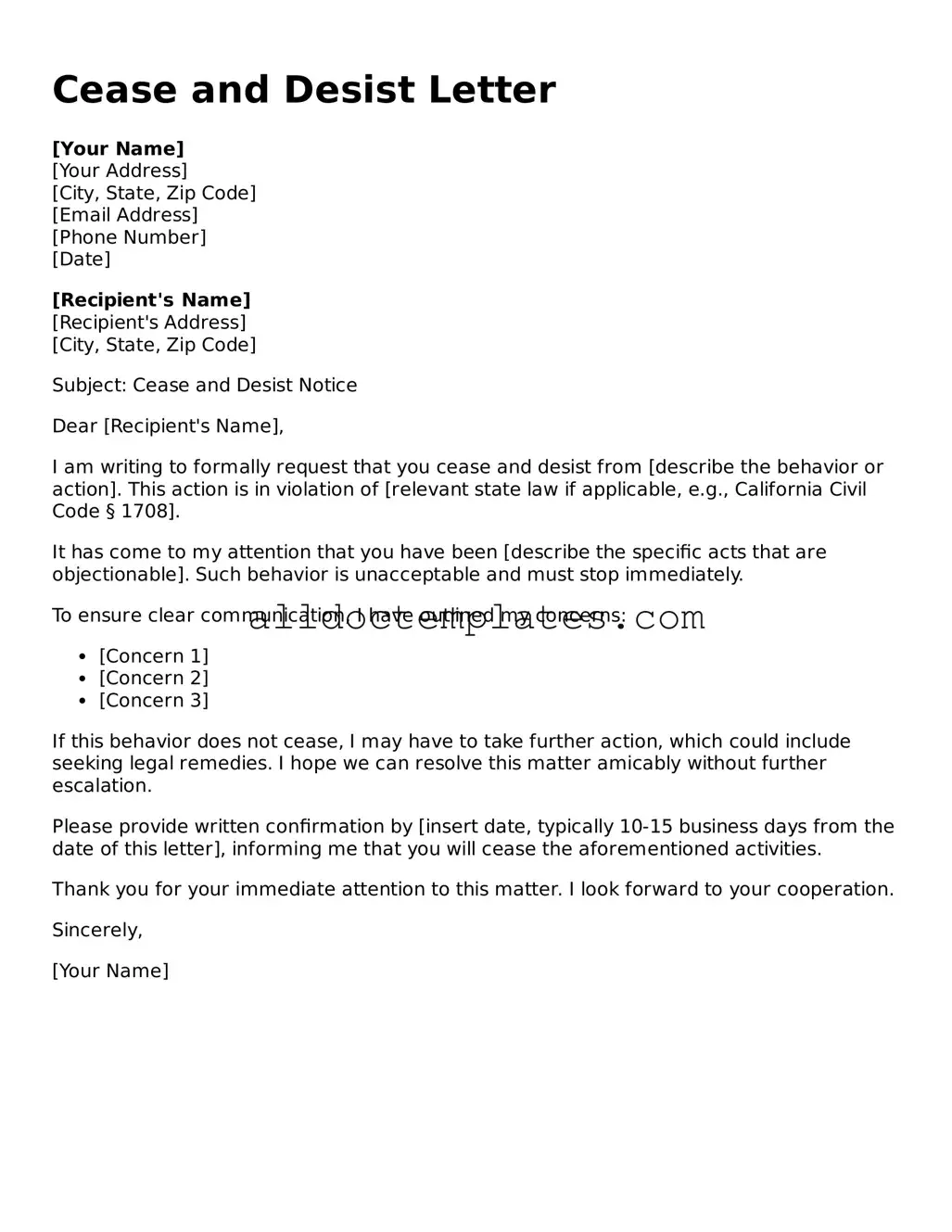Cease and Desist Letter
[Your Name]
[Your Address]
[City, State, Zip Code]
[Email Address]
[Phone Number]
[Date]
[Recipient's Name]
[Recipient's Address]
[City, State, Zip Code]
Subject: Cease and Desist Notice
Dear [Recipient's Name],
I am writing to formally request that you cease and desist from [describe the behavior or action]. This action is in violation of [relevant state law if applicable, e.g., California Civil Code § 1708].
It has come to my attention that you have been [describe the specific acts that are objectionable]. Such behavior is unacceptable and must stop immediately.
To ensure clear communication, I have outlined my concerns:
- [Concern 1]
- [Concern 2]
- [Concern 3]
If this behavior does not cease, I may have to take further action, which could include seeking legal remedies. I hope we can resolve this matter amicably without further escalation.
Please provide written confirmation by [insert date, typically 10-15 business days from the date of this letter], informing me that you will cease the aforementioned activities.
Thank you for your immediate attention to this matter. I look forward to your cooperation.
Sincerely,
[Your Name]
